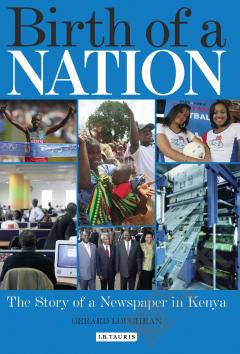The Birth of Cool
Tim Lewis, Review of 'The Birth of Cool: Style Narratives of the African Diaspora' in The Observer explains: 'The Birth of Cool is the product of a lifetimeâs research â initially unwitting but latterly professional â into black style and culture. In the book, Tulloch selects a handful of images taken during the 20th century and offers an in-depth analysis of the significance of the clothes and also what the photographs tell us about wider society at the time they were taken. Some of the subjects are well known: jazz singer and âblack female dandyâ Billie Holiday, for example, or the civil rights activist Malcolm X. Other images have a personal resonance for Tulloch. The book cover features her âAunt Gâ, Gloria Bennett, photographed in Doncaster in 1961 wearing a ruffled dress that she made herself and posing in front of a Jaguar Mk2 that did not belong to her or her husband, neither of whom could drive. The cigarette she confidently cradles âis a declaration of freedomâ, writes Tulloch, âblack feminine freedom.â Text on the back cover of the book: It is broadly recognized that black style had a clear and profound influence on the history of dress in the twentieth century, with black culture and fashion having long been defined as âcoolâ. Yet despite this high profile, in-depth explorations of the culture and history of style and dress in the African diaspora are a relatively recent area of enquiry. The Birth of Cool asserts that âcoolâ is seen as an arbiter of presence, and relates how both iconic and âordinaryâ black individuals and groups have marked out their lives through the styling of their bodies. Focusing on counter- and sub-cultural contexts, this book investigates the role of dress in the creation and assertion of black identity. From the gardenia corsage worn by Billie Holiday to the work-wear of female African-Jamaican market traders, through to the home-dressmaking of black Britons in the 1960s, and the meaning of a polo-neck jumper as depicted in a 1934 self-portrait by African-American artist Malvin Gray Johnson. This study looks at the ways in which the diaspora experience is expressed through self-image. Spanning the late nineteenth century to the modern day, the book draws on ready-made and homemade fashion, photographs, paintings and films, published and unpublished biographies and letters from Britain, Jamaica, South Africa and the United States to consider how personal style statements reflect issues of racial and cultural difference. The Birth of Cool is a powerful exploration of how style and dress dress both initiate and confirm change, and the ways in which it expressed identity and resistance in black culture.
{{comment.content}}








 京公网安备 11010802027623号
京公网安备 11010802027623号